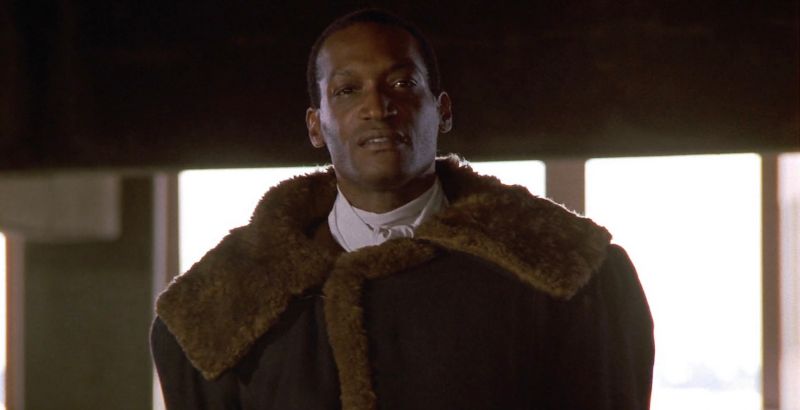Guest Post: Prince Jackson

My childhood was nothing short of being a good one, but with that came some real-life, fantastical, and mental horror. I was born in the early 90s in San Francisco, California, in the Bayview-Hunters Point district. I saw things growing up that no kid should ever have to see. Death, drugs, and severe mental illnesses are what surrounded me. Oddly enough, these real-life horrors allowed me to find something cathartic within the sphere of the horror genre.
I get the question daily, “Prince, what is it about the horror genre that makes you enjoy it so much?” And, the honest answer to that question is that I don’t know. It is just something that I experienced at such a young age, and experiencing something that I can overcome is, frankly, a nice feeling. Growing up in the hood of San Francisco, my family would utilize Black History stories to scare us to get in line. It is a tactic in Black households to use our history to teach their children a lesson because sometimes what is going on outside, or inside, their home is normalized horror. It sounds unfortunate, but it is accurate in some of these homes; my normalized horrors stemmed mainly from the happenings outside and I became numb towards them.
My family treated my numbness with something else entirely, horror movie icons. For example, some people got the Boogeyman and I got Candyman. Some cultures have stories to scare children and teach them lessons. Japan used ghost stories like Botan Dōrō, Germany with the Headless Horseman, China, with the undead also known as Jiangshi, Mexico with La Llorona; these are the stories linked with the culture that surrounds them. America doesn’t seem to be old enough to have its share of folklore horror. These cultures are using them for a purpose, and that is to teach a lesson. Even in America, these races still use their cultural folklore for communicating a life lesson. But, why do Black households use Black History for communicating these life lessons?
Black History is very dark, uncomfortable, and real. Parents would share pieces of their history as cautious tales, which made us afraid to make mistakes. You will hear things like “be careful of white women,” or “don’t get tattoos because cops will use that to identify you.” Admittedly, grandmothers are the main ones to orchestrate these stories of racism, violence, and hatred. Sometimes these stories would be personal stories from the 1940s or more known stories such as Emmitt Till, lynchings, the Tulsa Massacre, etc. Within these stories, lies a lot of horrors. We, people of color, take these “cautionary tales” and treat them as a keepsake, something that will forever affect us, and catalyze our actions.
Personally, this history raised my interest in the horror genre. As a child, I’ve always had a fascination with Black history and its imperfect correlation with horror. I decided to learn more about the fictional monsters, and have a sense of escapism from the real-life monsters that surrounded Black history — starting with a book Scary Stories to Tell in the Dark. This book taught me that more things in this world could be scary, but learning to overcome them is what makes you powerful. It wasn’t until I was older that I decided to go even further. Admittedly, I was probably too young to experience these horror movies, but I found bliss in watching them. It was the escapism that I was longing for. I found something that allowed me to feel catharsis. I wanted to know more about Freddy Krueger, Jason Voorhees, Michael Myers, the Cenobites, and much more.

But, these weren’t my stories that I saw on the screen. They are someone else’s, someone who doesn’t look like me, react like me, or think like me. The stories passed down from my elders is something that I longed to show on screens. You get some of this itch scratched with George A. Romero’s Night of the Living Dead (1968) with the protagonist, Ben, played by Duane Jones. Or, Bernard Rose’s Candyman with the antagonist, Candyman, played by Tony Todd. But they leave us wanting to know more about the stories.
The 2010s came out swinging in the horror genre. A lot of fantastic films came out to show the world what they had to say, how they perceived the current state of the world in their messed up sense of horror. But this still left me wanting to see more of the stories that were shared with me shown to the world. Then, we got Jordan Peele’s Get Out in 2017. Everything we heard as children, “if she can’t use your comb, don’t bring her home” is right there on the screen. The story of Guess Who’s Coming to Dinner? but with this sick twist of reverting people’s blackness to nothingness.
Get Out is what I was yearning for when it came to seeing modern representation on screen for horror. Peele incorporated so many undertones, and it felt like he was nodding to the Black folks in the audience. This movie earthed connotations entirely reminded me of my history and the suffering that my ancestors have gone through over the years.
Why don’t Black households have folklore and fairy tales as cautionary tales? Because Black horror is Black History, and history is a lot scarier.






